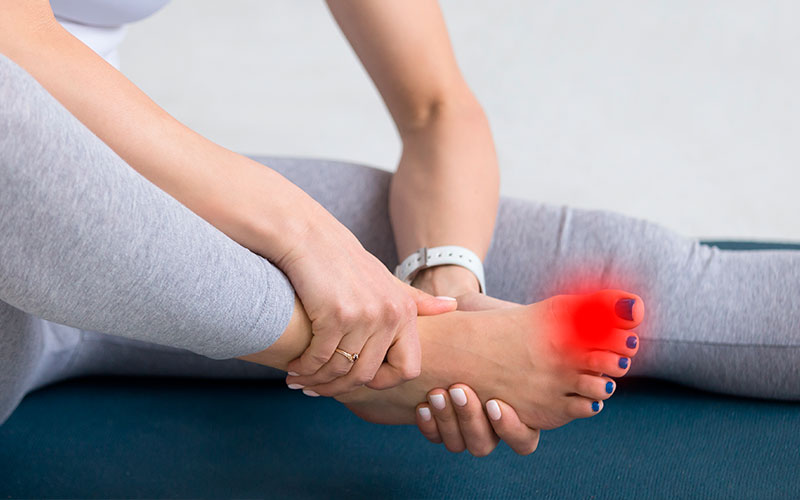Hammertoe
Hammertoes occur when there is a deformity of the joints in the second, third, fourth, or fifth toes.

This abnormal bending can put pressure on the toes, especially when wearing shoes, leading to the development of deformities that worsen over time. Early intervention when the joints are still flexible is key as the symptoms can often be managed and corrected without the need for surgery.
What causes hammertoes?
Hammertoes are caused by a muscle-tendon imbalance, which causes pressure, forcing the toe into a hammerhead shape.
You have a higher risk of developing hammertoes if you have:
- An inherited tendency because your feet are unstable (flat or high arches)
- Arthritis
- A toe injury (which may be caused by ill-fitting shoes that are too tight, or too short)
Additionally, your risk of developing hammertoes increases as you age.
What are the symptoms?
If your toe is set in an upside-down V, then you probably have a hammertoe.
Common symptoms include:
- Pain or irritation of top of the toe when wearing shoes
- Corns or calluses on your toe joints, between them or on the ball of your foot
- Difficulty moving the joint and pain when trying to move them
- Inflammation
- Contracture (bending) of the toe
- Open sores
When should I see a doctor?
If your feet, particularly your toes, are causing you pain, you should see a foot specialist to determine what the issue is and to keep the symptoms from worsening. As we mentioned above, early intervention with hammertoes can help to avoid surgery further down the line.
A doctor that specializes in foot conditions will be able to diagnose hammertoes through a physical examination of your foot, studying the contracture of the toes and manipulating your foot, in addition to a thorough history of your symptoms. They may also take X-rays to form a full picture of the deformities.
As the condition is progressive and will not resolve without intervention, your specialist will help develop a treatment plan to match your needs.
Non-surgical treatment options include measures to relieve pain caused by corns and calluses, advice on proper footwear, orthotic devices if needed, and medication to reduce pain and inflammation.
When hammertoes become rigid or painful, or if an open sore has developed, surgery may be necessary to reposition the toe, realign tendons or remove injured bone.
Procedures include:
- Arthroplasty – where half the joint is removed
- Arthrodesis – the entire joint is removed and replaced with a wire or pin
- Tendon transfer – tendons from under the toe moved to above the toe
- Basal phalangectomy – the base of the bone underneath the toe is removed
- Weil osteotomy – the metatarsal bone is shortened
We can help
With years of experience in treating foot-related conditions, our friendly staff and doctors are available to help you with your foot and ankle ailments. We’re dedicated to providing excellent care to adults, senior citizens, and children of all ages.